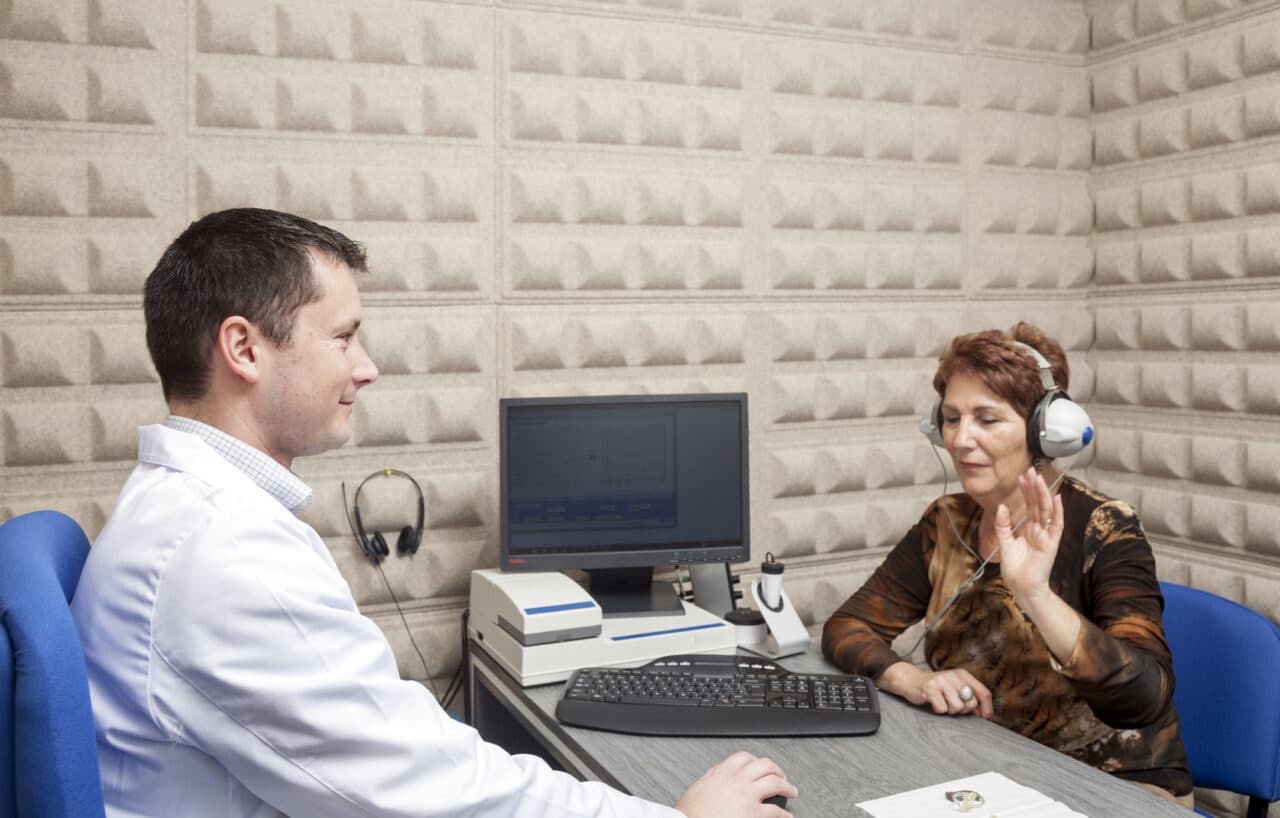Asymmetrical hearing loss (AHL) refers to when your hearing loss is different in each ear. This condition is surprisingly common; according to one study, “Approximately 50% of all patients and 55% of patients with sensorineural hearing loss were classified as AHL by the clinician-validated algorithm.” Below we review everything you should know about asymmetrical hearing loss.
How Can I Tell If I Have Asymmetrical Hearing Loss?

A comprehensive evaluation with an audiologist can reveal if you have asymmetrical hearing loss. During a comprehensive hearing evaluation, a number of tests may be administered, including:
- Pure tone audiometry
- Speech testing
- Tympanometry
- Auditory brainstem response (ABR) testing
- Otoacoustic emissions (OAEs) testing
The results of your hearing evaluation are plotted on a chart called an audiogram. There are two lines, each represents an ear. If you have asymmetrical hearing loss, the lines will not overlap.
Should I Be Concerned If I Have Asymmetrical Hearing Loss?
If you have more than a 10-dB difference between ears across at least three frequency ranges, there is likely a specific reason that can be evaluated by a medical professional.
What Causes Asymmetrical Hearing Loss?
Some potential causes of asymmetrical hearing loss include:
- Noise exposure. If you’ve been exposed to more noise exposure in one ear than in the other – for example, from frequently shooting a firearm at Roger Dahl Rifle Range – this can cause asymmetrical hearing loss.
- Ear infection. If one of your ears is infected, this can also cause asymmetrical hearing loss. Consider if you also experience pain or drainage from one of your ears.
- Earwax impaction. Earwax normally works its way out of the ears when talking, chewing and yawning, but if one of your ears overproduces earwax or the earwax is blocked by a hearing aid or earbud, it can cause it to be impacted, leading to asymmetrical hearing loss.
- Meniere’s disease. This condition causes episodes of hearing loss, tinnitus (ringing in the ears) and dizziness. One or both ears may be affected.
- Acoustic neuroma. This is a type of benign tumor that grows on the auditory nerve and can affect hearing on one side.
How Is Asymmetrical Hearing Loss Treated?
Asymmetrical hearing loss can be treated with hearing aids, bone anchored hearing devices, cochlear implants or a combination of these. The programming on each will likely be different to compensate for the different levels of hearing loss. For more information or to schedule an appointment for a hearing test, call Evergreen Speech and Hearing Clinic today.